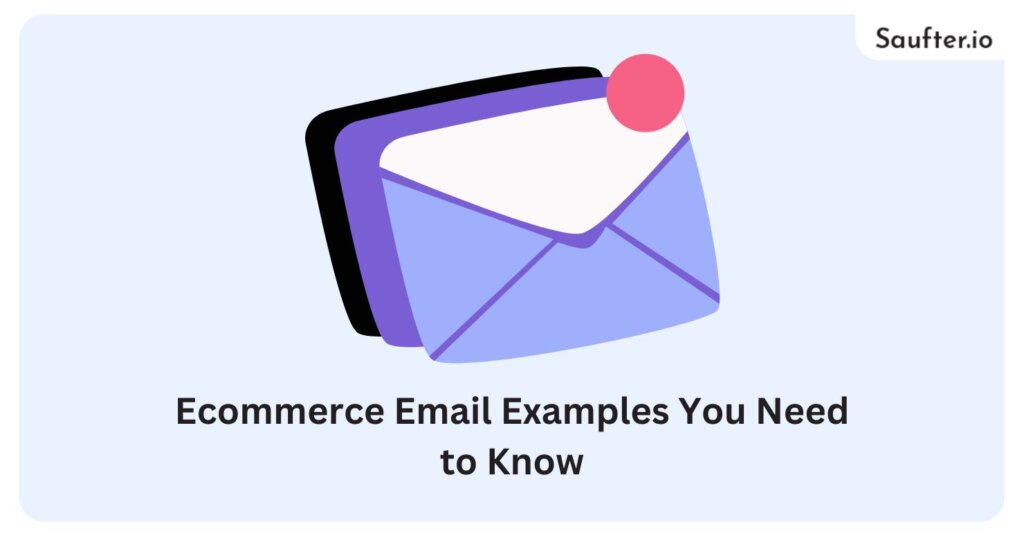Last Updated: October 2025
Did you know that email marketing delivers an average ROI of $42 for every $1 spent? In the world of online retail, that’s a game-changer. To make the most of this powerful channel, ecommerce brands need more than just basic campaigns—they need strategic, well-crafted messages that engage and convert.
In this article, we’ll share 13 ecommerce email marketing examples you need to know. From abandoned cart emails to welcome series and product recommendations, these examples will show you exactly how successful brands are using email to boost sales, build customer loyalty, and grow their online presence.
Table of Contents
How Can Your Email Marketing Campaign Be Improved?
13 Best E-commerce Email Marketing Examples
- Welcome Emails
- Abandoned Cart Emails
- Personalized Promotions Emails
- Recommended Product Suggestions Emails
- Order Confirmation Emails
- Upsell Emails
- Thank You Emails
- Survey or Review Emails
- Product Catalog and Latest Lines Emails
- Referral Emails
- Order Dispatch Emails
- Re-Engagement Emails
- New Launch Emails
Ecommerce Email Marketing Automation
How Do Email Campaigns Work?
Email marketing is one of the most effective channels for e-commerce brands to connect, convert, and retain customers. Sending messages is one thing, but what about messages at the right time?
Email marketing keeps you in touch with people who’ve chosen to be on your brand’s list. So it’s one of the most personal and effective marketing channels. Reaching out with relevant messages at key stages in their journey with your brand builds brand awareness with potential customers and helps strengthen loyalty with existing customers.
Today’s strategy doesn’t involve emailing blasts to a massive list. Brands, on the other hand, are focused on quality subscribers rather than quantity. Once you have a list, you segment it by behavior, demographics, or funnel stage to send targeted messages that drive results.
In short, email marketing works because it’s targeted, personalized, and cost-effective.
How Can Your Email Marketing Campaign Be Improved?
Research has shown that email marketing is responsible for 19.8% of all transactions in e-commerce, making it one of the highest revenue-generating channels in online sales. Here are the mechanics of how to take your e-commerce email campaigns to the next level:
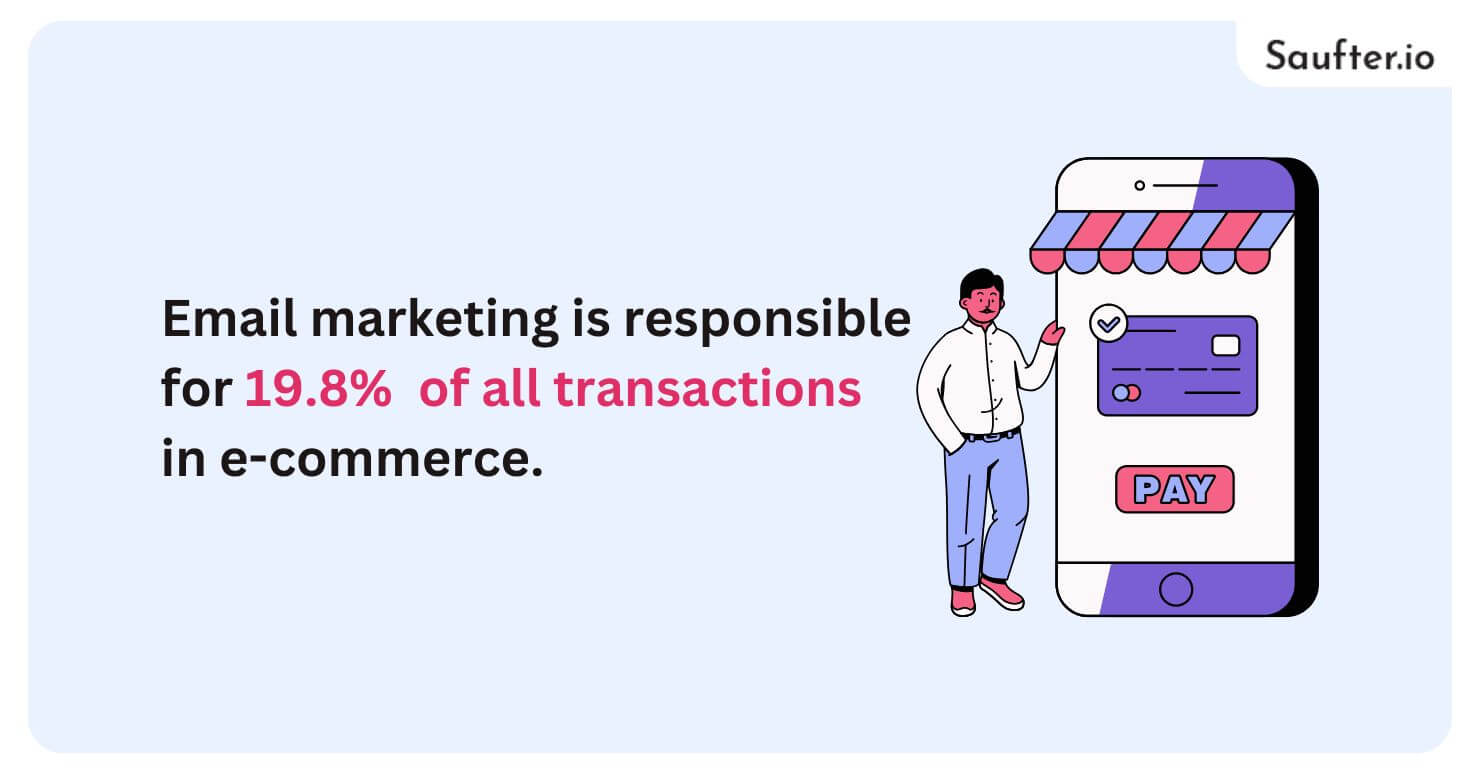
- Segment Your Audience: Divide subscribers into different groups based on their behavior, purchase history, or interests to send them more relevant emails.
- Craft Better Subject Lines: Run tests on subject lines and preview text that pique interests to improve open results.
- A/B Test Elements: Experiment with different CTAs, images, layouts, and copy to see what converts best.
- Personalize Content: Use first names, locations, and past purchase data to add a tailor-made touch to your messages.
- Optimize for Mobile: Make your emails easy to read (and navigate) on a smartphone or tablet.
- Set Up Automation: Use triggered emails for welcomes, cart abandonment, follow-ups, and more to save time and increase efficiency.
- Analyze Performance: Track metrics like open rate, click-through rate, and conversions to guide improvements.
- Maintain Consistency: Send emails regularly to stay top of mind, but avoid spamming your audience.
13 Best E-commerce Email Marketing Examples
Struggling to craft emails that actually drive sales? The right email at the right moment can turn browsers into buyers—and one-time shoppers into loyal customers.
Here are 13 of the best ecommerce email marketing examples to inspire your next campaign and boost your conversions.
1. Welcome Emails
Welcome emails greet new subscribers or customers after they sign up or make their first purchase. With stronger open and click-through rates than your average email, these are essential for getting that early engagement going.
You can leverage them to set expectations, introduce products, and even deliver a welcome discount. These emails are sent immediately, so the time and effort required are saved through automation!

One example of a strong welcome email is McIntosh, which features friendly messaging, a discount code, reviews, and a link to their affiliate program, all packaged into one powerful, engaging email.
2. Abandoned Cart Emails
Abandoned cart email campaigns are used to recover lost sales when customers leave without buying. With almost 70% of carts being abandoned, these reminders can bring in serious revenue.
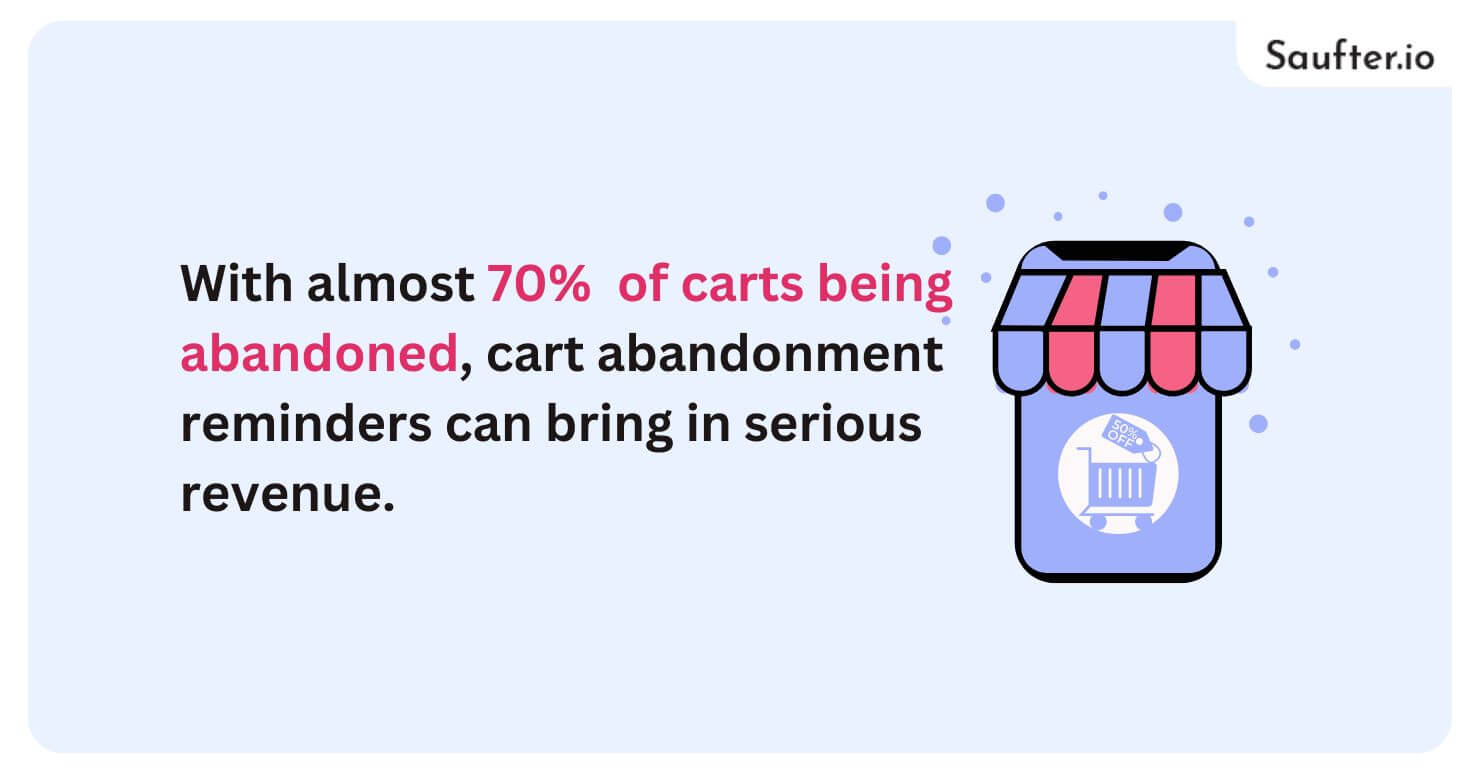
They achieve this by re-engaging shoppers, answering their concerns, and providing incentives such as discounts. Sorting this type of email is very simple and effective with tools like Saufter.
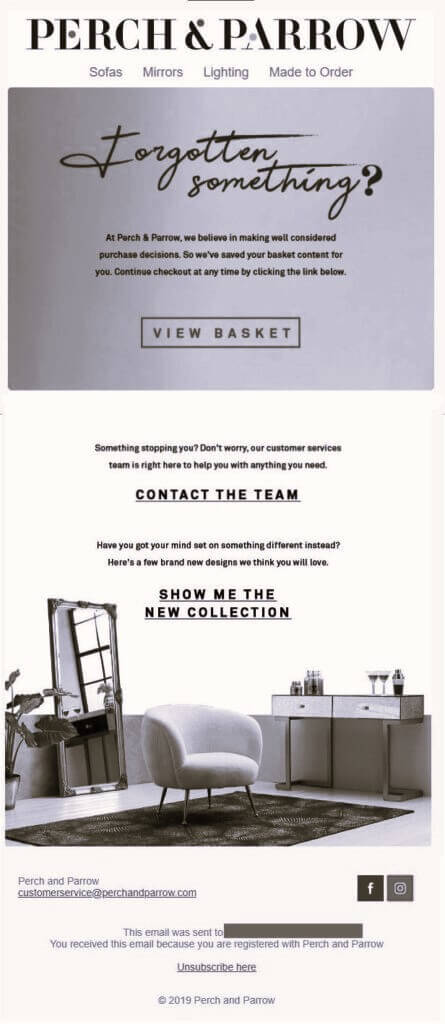
Perch & Parrow is good at showing saved carts, providing support and displaying products related to someone’s purchase, which gives visitors more reasons to come back and finish converting.
3. Personalized Promotions Emails
Personalized promotions recognize when customers are having special days, such as birthdays or anniversaries. These types of emails work well in building customer relationships and increasing customer loyalty by providing the right type of discount or exclusive offer.
To please their subscribers, companies like PUMA use bright birthday greetings with exclusive discounts. To add some creativity, Outdoor Voices sends half-birthday messages to customers, putting a smile on their faces.
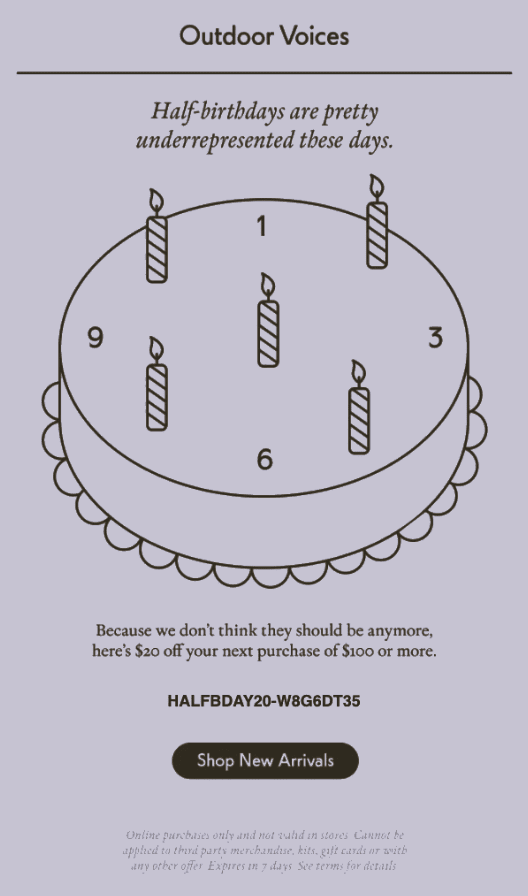
Personalized touches demonstrate to customers that you recognize them as individuals, which improves engagement and ultimately drives sales. It is these implementation processes that drive your infrequent buyers to be repeat buyers and fans of your brand.
4. Recommended Product Suggestions Emails
Recommendation emails increase sales by presenting customers with relevant items based on previous behavior or preferences. These emails feel personalized, not brazen, making them extremely effective. You could also show similar items, often bought together products, or even popular products from the same category.

La Rochere North America does this effectively by thinking of their customers as tea lovers and targeting them with other tea-related items such as tea infusers and cups.
Including links to your social media channels or customer ratings makes your business appear more credible and better-engaged, which is likely to lead to higher repeat purchases.
5. Order Confirmation Emails
Customers rely on order confirmation emails to give them peace of mind that their order went through successfully. They usually contain order information, estimated delivery dates and contact details.
But actually, you can take things further, as Fleet Farm does, by throwing in product recommendations to help increase order value. This easy upsell opportunity is a good fit within the confirmation.
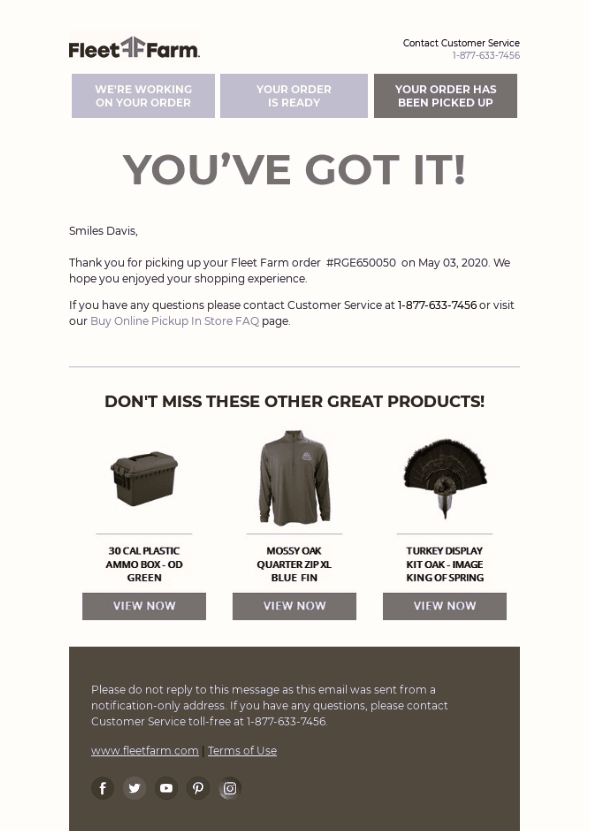
So, this is one of the best opportunities to re-engage customers, strengthen their trust, and nudge them towards more shopping while offering vital transactional data.
6. Upsell Emails
Upsell emails help earn more revenue by suggesting complementary products or upgrades based on customers’ past purchases. They’re most effective when tailored, suggesting socks, say, after someone buys a pair of shoes or accessories to accompany a new order.
These emails not only increase average order value but also help create a better shopping experience. Using language such as “Customers also bought…” creates a sense of social proof.
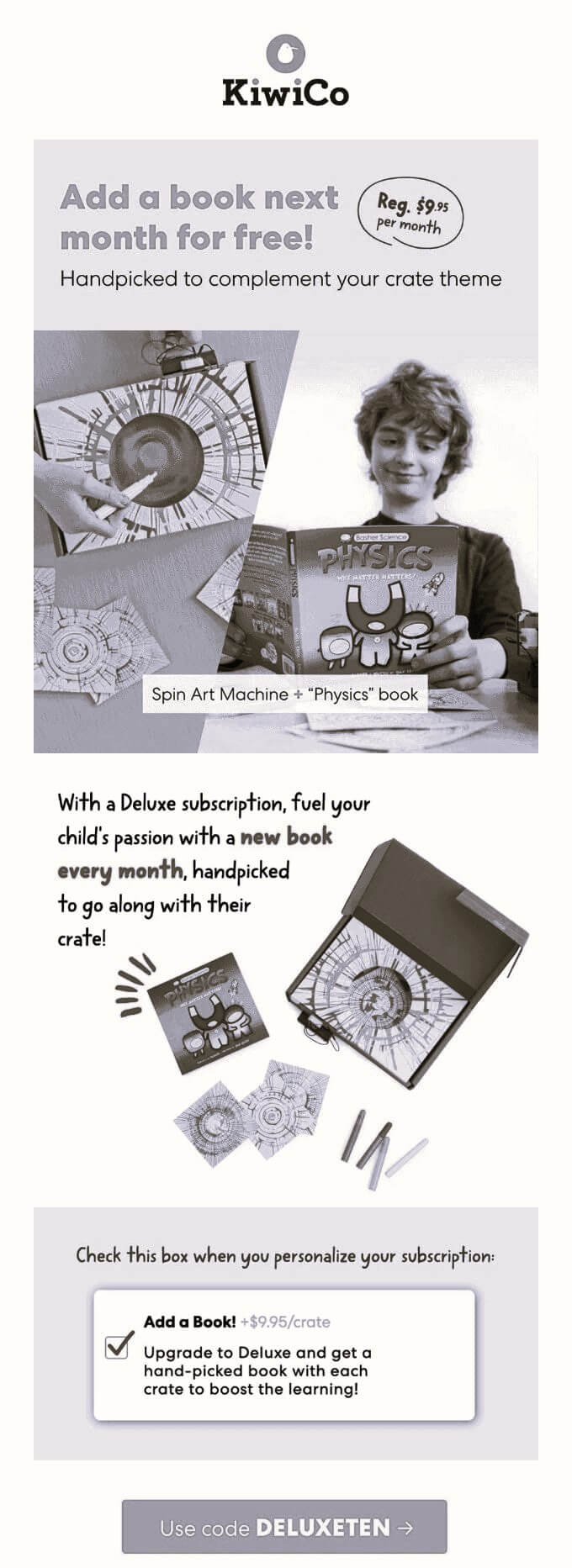
Upsell emails allow you to provide the convenience of relevant suggestions that make your customers feel understood while bringing in additional profit for your e-commerce store.
7. Thank You Emails
This type of email is one of the easiest but most effective methods of thanking your customers and showing authenticity. They allow you to humanize your brand and reinforce emotional connections. Even without a sales incentive, these emails develop goodwill, helping with customer loyalty.
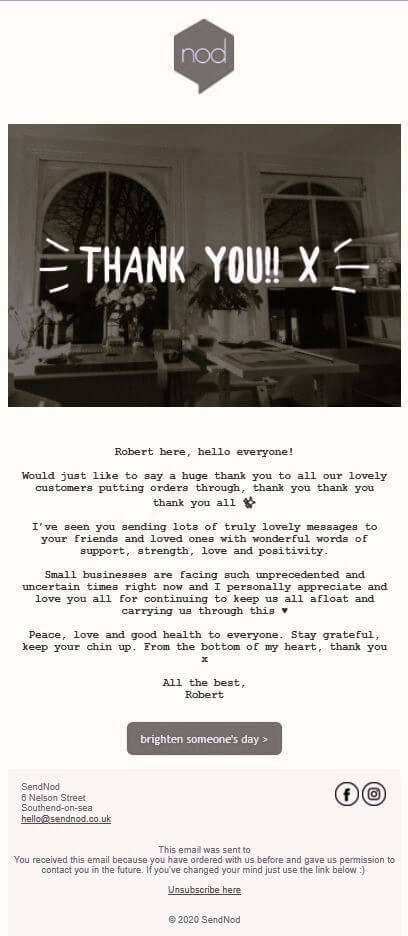
An out-of-the-box message sent by SendNod is one of the coolest ways to express humility and gratitude and leaves the customer with a good feeling that your company is not just about money. These little things make a difference.
When customers feel appreciated, they’re more likely to come back again, tell their friends about your brand and spread the news about their experience.
8. Survey or Review Emails
Survey and review emails gather valuable feedback and boost customer trust. After a purchase, encourage customers to give feedback through a short survey or by posting a review. Use incentives such as discounts or promos to boost participation.

Sjaak’s Organic Chocolates, for instance, has 10 percent off, plus a chance to win $50 in products. These emails allow you to improve products, identify trends, and show reviews on your site. Ultimately boosting your brand’s credibility and assisting prospective customers in making smart decisions.
9. Product Catalog and Latest Lines Emails
Sending emails containing your product catalog or new arrivals serves to remind customers of your brand. These communications work well for loyal customers seeking updates or seasonal items. Use attractive product images and concise, engaging descriptions to pique interest quickly.
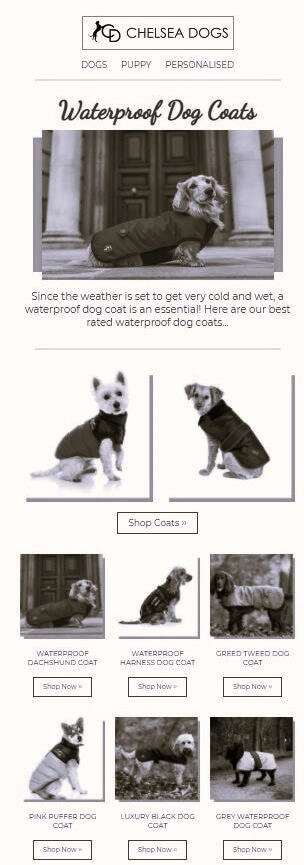
Chelsea Dogs does this brilliantly, showcasing their newest collections alongside curated picks. Featured products, especially new or trending items, also give consumers an insider’s feel, encouraging return visits and purchases at your store.
10. Referral Emails
Referral emails leverage word-of-mouth marketing by incentivizing customers to tell their friends or family about your brand. But you’ll have to offer an incentive, perhaps a discount or store credit for both the person referring and the new customer. These are capable of generating high-quality leads and enhancing brand loyalty.
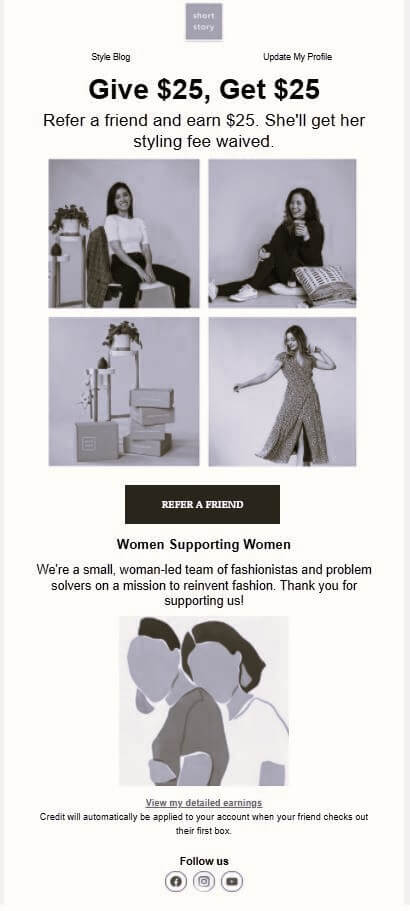
Short Story, for example, gives you $25 for a successful referral, thanking loyal customers for their patronage. Referral emails engender exclusivity, trust, and reward, allowing you to build community around your brand without massive up-front cost.
11. Order Dispatch Emails
Order dispatch emails inform the customers that their package has been shipped and provide them tracking details. These emails calm nerves, establish trust, and enhance the post-sale experience. This is eagerly awaited information for customers, and as a rule, open rates are high.
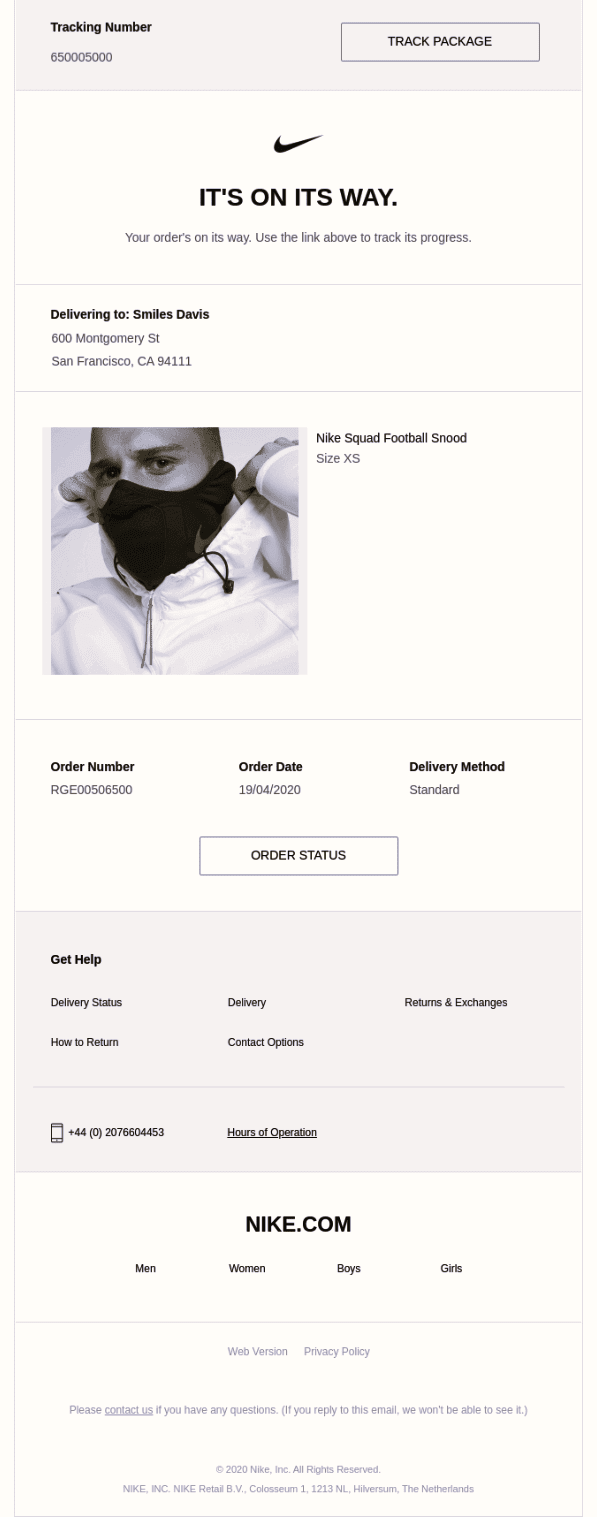
Nike’s dispatch emails are short, concise, and informative. They just feature a big product image and a tracking button. This is also a subtle opportunity to offer up cross-sells, upsell, or nudge a future purchase without distracting from the primary purpose of the shipment update.
12. Re-Engagement Emails
Re-engagement emails are designed for inactive subscribers or customers who have not purchased in a while. Win them back with a friendly tone and incentives, such as discounts or special deals. These are new arrivals, pre-orders, etc.
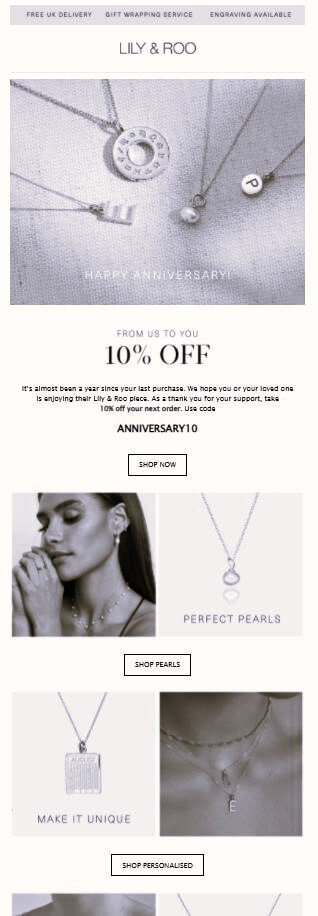
By keeping popular categories front and centre alongside a good discount, Lily & Roo does this well. These emails resell customers on what they loved about your brand in the first place, giving them the space to come back.
13. New Launch Emails
Emails based on new launches create buzz about new products or collections. These emails tend to work well with your existing customers who are already familiar with your brand. Use of bold visuals, succinct text, and clear CTAs to generate traffic and sales.
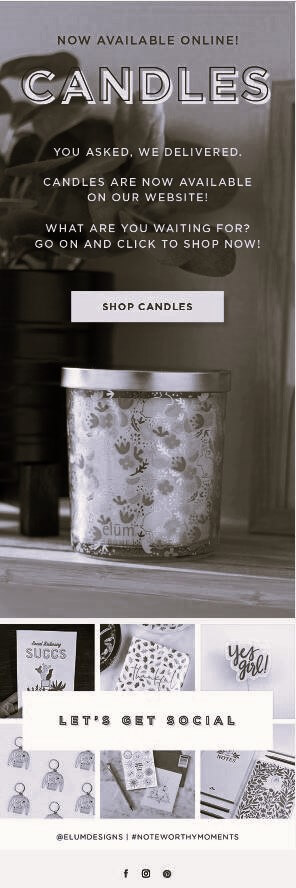
Elum Designs, for example, shares new products using eye-catching imagery and options to “follow” socially. Building anticipation with this type of email sets customers up for inclusion in your brand’s journey and prompts action now — or at least helps spread the news.
Ecommerce Email Marketing Automation
Email marketing automation is a game-changer for e-commerce businesses. Automation allows you to deliver the right message at the right time on autopilot instead of sending emails manually.
You can set up automated workflows triggered by customer actions, such as:
- Welcome emails for new subscribers
- Abandoned cart reminders to recover lost sales
- Post-purchase follow-ups to build loyalty
- Re-engagement campaigns for inactive users
These automated emails will guide shoppers through the sales funnel, improve customer retention, and boost conversions, all without needing constant manual effort. By segmenting your audience according to behavior and preferences, your emails can share more relevance and subsequently be more likely to drive a sale.
In short, e-commerce email automation saves time, personalizes the shopping experience, and keeps your brand in front of customers—exactly when it matters most.
Saufter: The Best Email Marketing Tool for E-commerce

If you’re running an e-commerce business and looking for a smart, AI-powered email marketing tool, Saufter stands out as a top choice. What makes Saufter exceptional is its ability to understand customer behavior and automate hyper-personalized email campaigns that actually convert.
Using advanced AI, Saufter not only tracks your customers’ browsing habits and purchase patterns but also triggers campaigns at the most impactful moments—such as cart abandonment, product viewing, and post-purchase follow-ups. It even sends tailored product recommendations based on individual browsing behavior, ensuring that every email feels relevant and timely.
One of the standout features is Saufter’s ability to trigger campaigns based on order status changes. For instance, it can automatically send feedback requests or upsell offers five days after delivery—maximizing engagement without manual effort.
With powerful behavior tracking, personalized content, and automation capabilities, Saufter takes the guesswork out of e-commerce email marketing—making it an ideal choice for brands that want to build stronger relationships and boost sales effortlessly.
Conclusion
Email continues to be one of the most effective channels in a marketer’s toolkit, with 80% of retail professionals citing it as their top driver for customer retention. The ecommerce email marketing examples shared in this article prove just how impactful the right message at the right time can be.

But success doesn’t stop at good design and clever copy. To truly make the most of your campaigns, you need the right tools. Saufter is a powerful AI-driven platform built for e-commerce businesses. From behavior-based triggers like cart abandonment and product views to personalized product suggestions and post-purchase follow-ups, Saufter helps automate and optimize every part of your email strategy.
Use these ecommerce email marketing examples as inspiration—and let Saufter turn your ideas into high-converting, customer-retaining campaigns.
